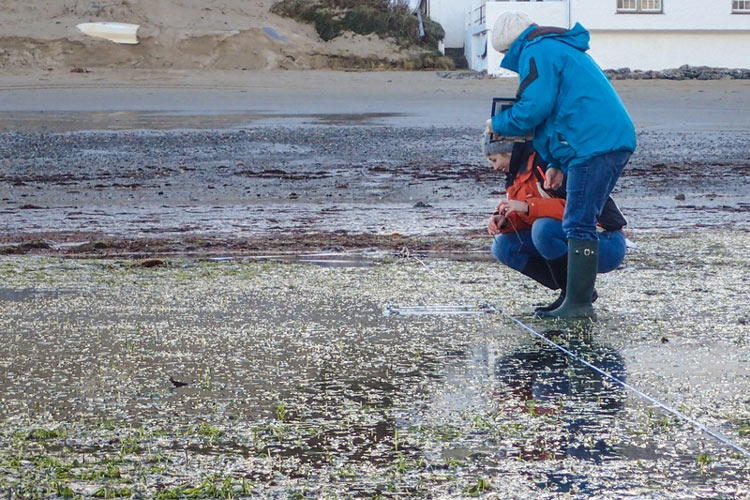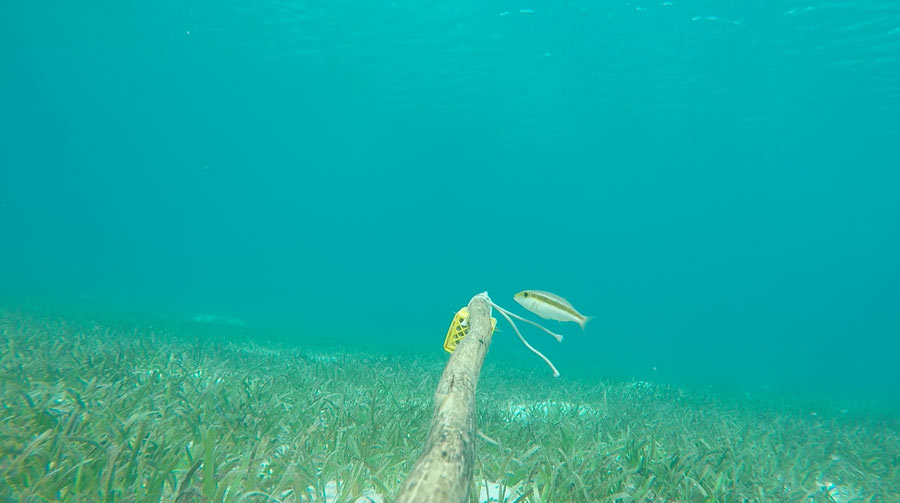
As a Marine Biology student at the University of Glasgow, Scotland, I was lucky enough to be accepted on to a Maters Work Placement. This course allows a few selected students to take a year between the 3rd and 4th year of their degree to experience working for an organisation while also performing research. At the end of the placement I continue back into my final honours year and I will then graduate with a masters. I am currently working with Project Seagrass as an intern for my placement and will be working with them in this capacity until the summer.
My current work involves conducting a meta-analysis of fish assemblages in seagrass habitats around the world. This involves searching for research papers that contain any data about fish species that have been observed in seagrass beds and then adding this data to our own database. I have been organising this database in order to make it easy to navigate and interpret and I have also been verifying the data that has already been entered. I am now onto the stage of searching for any papers that have been missed or published after the original searches were made so that we can ensure that all the possible work with the data we want have been found and collated in our database. This way when we are finished we can say that the fish species mentioned in our database are found in seagrass habitats in certain locations with absolute certainty.
In addition to this, I’m also working on a project that involves analysing videos that have been filmed in Indonesian seagrass beds. Baited Remote Underwater Video systems, or BRUV’s, are camera systems that are left underwater, to attract fish with the use of bait. Analysing this footage is a tiresome task, especially with each video lasting 30 minutes. Analysis of this is done using special software which allows you to tag and count individual fish species in each frame – again very time consuming. This gives us the MaxN. The MaxN is the maximum number of one species of fish in a frame of the video at a given time. This isn’t the most exciting work and I tend to find myself daydreaming that I am scuba diving in Indonesia while watching certain stretches of video – many with very little fish.

A fish investigates the bait
As part of my internship I’ve also had the opportunity to conduct my own research. Once written up this will then contribute to my degree, and once complete will help secure my masters. For this project I am using the videos collected in Indonesia and analysing them in a similar way to determine if there are fish species or assemblages that show habitat specificity towards certain seagrass species, or seagrass beds cover. I am hoping to see some sort of connection with this by only time will tell.

Some videos lacked any fish
Back in Feburary I conducted my first SeagrassWatch exercise in Porthdinllaen, Wales – I can spell this place, but can’t pronounce it! It was a nice opportunity to get out of the office for a few days and experience some field work, even if it did mean getting up ridiculously early and getting very cold and wet. As part of the trip we also performed some educational outreach with a primary school from the area. They learnt about seagrass and its importance and they also learnt about what lives in the seagrass and had a fantastic and fun day out at the beach – sand animal building was a requirement of course! I was even trusted to have a go with the Drone, which was also great fun!

Drone flying!
In addition to everything else, I’m also researching Scottish seagrass during my internship, in an attempt to map out its rough distribution so that I can find some good spots in Scotland to start my own SeagrassWatch monitoring, expanding the range of Project Seagrass sites to include Scotland. We’re going to be involved with the Glasgow Science festival and will hopefully put on some events over the summer around Glasgow.

